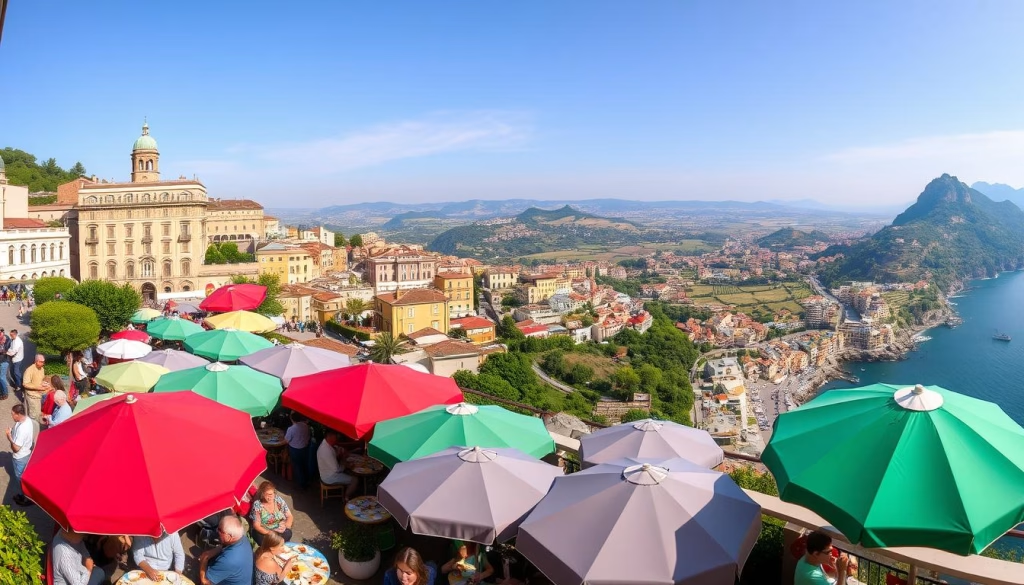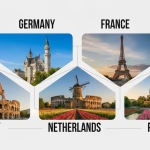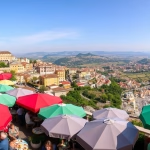We open this report with clear, data-led signals of momentum across the travel market. Italy hosted 64.5 million arrivals in 2024, placing the country third in Europe and fifth globally. National occupancy averaged 56%, while luxury hotels generated EUR 9 billion, up 9.23% year‑on‑year.
- Executive briefing for UK readers: why Italy’s hospitality market matters now
- Market snapshot 2024-present: arrivals, ADR, occupancy and value
- The tourism and hospitality industry in Italy: key drivers reshaping demand
- Premium catalysts: Rome’s Jubilee and the Milan-Cortina Games as long-tail boosters
- Brand penetration and conversions: international chains scale toward 22% of rooms by 2028
- Investment landscape: capital flows, deal volume and luxury’s share of transactions
- Policy tailwinds: Superbonus Turismo, IFIT and FRI-Tur driving refurbishment
- Constraints and headwinds: labour, energy and bureaucracy
- Ownership and market structure: independents vs chains in a fragmented country market
- Accommodation classes and segment dynamics: luxury to mid & upper-mid, budget & economy, serviced apartments
- Booking channels and revenue management: direct, OTAs, corporate/MICE and agents
- Regional performance: Northwest, Northeast, Central, South and the Islands
- Luxury hotspots and lifestyle destinations: Lake Como, Forte dei Marmi, Taormina and beyond
- Digital transformation and data: PMS modernisation, DMAs and channel strategy
- ESG, wellness and cuisine-led experiences: aligning culture, heritage and sustainability
- Infrastructure and access: secondary airports and high-speed rail expanding destination appeal
- Outlook for 2025-2030: where Italy’s hospitality heads next
Average daily rates reached EUR 840 in Rome and EUR 910 in Milan, outpacing many European peers. Branded supply now tops 20% nationally, with about 155 international names operating. Hotel investment hit EUR 2.1 billion, roughly 30% above the decade average, with luxury taking 45% of that spend.
We frame this section to help UK stakeholders assess market exposure, product mix and seasonality. Our aim is to show why diversified destinations, strong pricing power and growing brand penetration matter for owners, operators and investors.
Executive briefing for UK readers: why Italy’s hospitality market matters now
UK arrivals numbered 3.59 million in 2023, placing British visitors among the most valuable source markets. Germany and the United States join the UK at the top for high-spend five‑star room nights in 2024, underlining how demand from abroad lifts premium pricing.
ADR growth of c.4% in 2024 and the EU Digital Markets Act together improve direct-booking economics for hotels serving British guests.
- We see clear product gaps where city breaks and wine‑led itineraries meet under-supplied luxury and upper‑mid inventory.
- Event-led demand across 2025–2026 and new luxury openings will tighten availability and push rates higher in key destinations.
- Connectivity upgrades and curated experiences rooted in culture and cuisine support repeat visitation and cross‑season appeal.
For UK investors and operators, this market offers short-term yield from events and long-term value through brand affiliation, refurbishment incentives, and improved distribution. We view it as a core allocation for years ahead.
Market snapshot 2024-present: arrivals, ADR, occupancy and value
We saw 64.5 million visitors in 2024, with national occupancy at 56%. This mix of leisure and business keeps city and regional markets buoyant, supporting steady rooms demand across seasons.
Leading source markets remain Germany (13.53m), United States (7.55m) and United Kingdom (3.59m). That split shapes language needs, F&B offers and segmented revenue tactics for hotels and independent operators.
Pricing power and channel dynamics
Rome posted an ADR of EUR 840 and Milan EUR 910, signalling clear rate-setting power versus European peers. Luxury hotels generated EUR 9 billion in 2024, around 16.8% of sector revenue, enabling lower breakevens and ongoing reinvestment.
- Booking.com accounts for c.71% of OTA revenue, Expedia c.15%, intensifying commission exposure.
- ADR growth of +4% in 2024 reflects a mix shift toward higher-rated segments and premium destinations.
- Length of stay trends — Venice >2.4 nights — point to more overnight stays and deeper per‑stay spend.
We conclude that market performance favours granular revenue management, selective capacity planning and rooms mix optimisation in gateway capitals and key destinations.
The tourism and hospitality industry in Italy: key drivers reshaping demand
We expect major 2025–2026 events to reprice premium inventory and alter booking patterns beyond core months.
Jubilee 2025 and Milan‑Cortina 2026 will add a near‑term uplift of about +1.2% across Central regions and Lombardy. That impact extends to art cities as guests take longer stays or choose higher‑grade rooms.
Event uplift and spillover
Event compression raises short‑term rates and compresses availability. We see secondary cities and resorts capturing overflow as guests seek quality alternatives.
Digital-first booking and mobile planning
Digital bookings now represent c.50.33% of market size. OTAs are expanding at a 9.81% CAGR toward higher penetration by 2029.
Smartphones guide 65% of domestic guests and 78% of long‑haul visitors during trip planning. Operators who optimise direct engines and personalised content will capture more demand.
Tax-backed refurbishments and quality upgrades
Incentives such as Superbonus Turismo, IFIT and FRI‑Tur lower capex hurdles. Grants and reimbursements accelerate energy, digital and guest‑facing upgrades across properties.
- We note professional revenue tools and loyalty schemes that convert event spikes into repeat stays.
- Refurbishment raises perceived value, allowing stronger rate realisation for mid and upper‑mid hotel segments.
- Policy rules on asset use over five years help stabilise supply and reduce cyclical risk.
Premium catalysts: Rome’s Jubilee and the Milan-Cortina Games as long-tail boosters
Major events will create short-term compression while seeding a longer premium for high‑end rooms. We estimate a +1.2% uplift across Central regions and Lombardy during event peaks, with clear spillover into adjacent art cities and nearby resorts.
Affluent visitors from Germany, the United States and the United Kingdom account for over 65% of five‑star room nights. That mix, combined with ADR leadership in Rome (EUR 840) and Milan (EUR 910), underpins sustained price premiums beyond event months.
We separate instant spikes from structural gains. Peak weeks force affluent guests to alternate destinations, widening the high‑value footprint for several years.
- Distinguish event‑month compression from the halo that sustains long‑term luxury demand.
- Allocate suites for VIP and corporate blocks; use rate fences and LOS controls to protect value.
- Leverage culture, cuisine, wellness and private experiences to convert first‑time visitors into repeat guests over years.
- Capture data and enrol loyalty during spikes to extend the long tail of event‑led demand.
Brand penetration and conversions: international chains scale toward 22% of rooms by 2028
International chains have doubled presence since 2015, driving a clear shift from standalone properties to affiliated models. Branded supply crossed 20% in 2024 with roughly 155 international brands active. We note that 73.40% of openings through 2026 are conversions, a practical route around new‑build limits.
Affiliation delivers measurable upside: chains bring global distribution, loyalty access and unified ESG protocols that raise asset performance. Marriott alone has 20 announced projects skewed to full‑service and luxury, where RevPAR premiums run 10–12% versus comparable independents.
Owners choose franchise or management options to balance control and accountability. We recommend rigorous diligence on fee schedules, performance tests and capital plans to protect owner value and modernise systems via brand platforms.
- Conversions dominate pipelines and accelerate scale while preserving local character through soft brands.
- Professional revenue‑management and procurement lift margins and ancillary revenues across market segments.
- Operators focus on gateway urban hotels and select resort assets to capture premium demand and loyalty flows.
Investment landscape: capital flows, deal volume and luxury’s share of transactions
Capital returned strongly to lodging in 2024, with total hotel investment at EUR 2.1 billion, up c.30% year‑on‑year and the second‑highest on record.
Rome led allocations with EUR 465m, Venice EUR 353m and Milan EUR 173m. Resort hotspots — Lake Como, Sicily and Forte dei Marmi — made up roughly 39% of deal volume.
Top destinations for investors
Our focus maps clear concentration across Rome, Venice and Milan, with notable rotation into high‑end resort destinations.
Luxury assets accounted for 45% of invested capital and 19% of rooms sold, reflecting strong margins and brandability.
Value‑add strategies: conversions, management and repositioning
Value‑add transactions made up 51% of deals. Seventy‑three percent of sales closed as vacant possession, enabling operator selection and full repositioning.
- Conversions of heritage buildings and energy retrofits unlock yield and support ESG targets.
- Operator‑led acquisitions and selective management contracts help protect owner upside.
- International investors supplied c.53% of volume, broadening buyer pools and financing structures.
We flag underwriting priorities: ADR headroom, seasonality smoothing and capex for compliance. Pipeline risks exist in some submarkets, but differentiated concepts often deliver outsized post‑repositioning premiums.
Policy tailwinds: Superbonus Turismo, IFIT and FRI-Tur driving refurbishment
Policy-backed funds are turning long-planned refurb projects into immediate value plays.
Superbonus Turismo reimburses up to 80% of eligible renovation costs. IFIT adds up to EUR 100,000 per project for digitalisation and energy works. FRI-Tur provides a EUR 780m revolving fund that backs investments from about USD 0.55m to 10.93m.
Early adopters report 15–20% cuts in utility bills via high-efficiency chillers and photovoltaic panels. Grant-funded assets must retain hospitality use for five years, which secures long-term guest flow.
- These schemes compress payback periods, lifting perceived asset value and enabling quicker repositioning of properties and hotels.
- Regional uptake skews to Northern and Central areas, accelerating upgrades across key corridors and boosting local facilities.
- We stress robust project management to deliver on time, control costs and align refurb works with revenue management and services improvements.
Outcome: strategic sequencing—plant and envelope first, guest-facing next—reduces risk, raises NOI and strengthens market positioning to capture stronger demand.
Constraints and headwinds: labour, energy and bureaucracy
Labour shortages and rising wage bills now limit service capacity across major city hubs and coastal resorts.
We record 1.5 million employees in 2024, with 604,000 roles hard to fill. Vacancies exceed 30% for chefs and pastry chefs, while wages sit about 14% above pre-pandemic levels.
Labour costs now consume more than one-third of revenue for many operators. That squeeze reduces margins and can force inventory caps during peak demand periods.
Energy, ESG and heritage retrofit pressures
Volatile energy prices and CSRD rules mean metering and audited ESG statements by 2026. Without upgrades, properties risk exclusion from corporate travel policies.
Heritage projects complicate works: window and insulation costs run roughly 25% higher. Smaller owners face collateral limits for green finance despite preferential lending for 30% reductions.
- We note employer fixes such as signing bonuses, housing and apprenticeships, but scale remains limited.
- Tactical mitigations include hedging, energy management systems, phased retrofits and shared services.
- Workforce planning and training pipelines are essential to sustain demand capture over years.
Ownership and market structure: independents vs chains in a fragmented country market
Independents account for most properties, while chains expand by converting classic buildings into branded assets.
In 2024 independents held 78.49% share, yet chains grew at a 7.21% CAGR. Sixty‑seven percent of branded openings use conversions, showing how operators access heritage stock without new builds.
Chains deliver a 10–12% RevPAR premium through central procurement, digital marketing and advanced revenue systems. That premium funds improved services and lower unit costs across assets.
- Low concentration means many owners lack scale; affiliation via soft brands keeps local character while upgrading distribution.
- We see appetite for franchise and management deals as a hedge against shocks and a route to modernise management and reporting.
- City gateway markets and select resorts look ripe for consolidation and professionalisation by both domestic boutique groups and global names.
Fragmentation raises risks: uneven standards, weak loyalty capture and higher commission exposure. We recommend cluster operations, shared back‑office and CRM‑led cultural storytelling to scale value without losing authenticity.
Accommodation classes and segment dynamics: luxury to mid & upper-mid, budget & economy, serviced apartments
Guest demand splits clearly by price point, with mid-market rooms carrying volume while top-end suites capture margins. We map how each class performs and where owners should focus capital.
Luxury growth and value
Luxury hotels led growth at a 9.12% CAGR, exceeding EUR 9bn in 2024. Investors allocated 45% of deal volume to five‑star assets, drawn to resilient margins and brandability.
Upscale offers now include suite floors, villa annexes and curated cultural itineraries. Wellness facilities and premium F&B elevate perceived value and justify higher rates.
Mid & upper-mid resilience
Mid and upper-mid properties generated 52.36% of 2024 revenue. Renovated historic hotels meet both domestic international needs and price-sensitive leisure groups.
These rooms balance steady occupancy with manageable capex, making them workhorses for many portfolios.
Serviced apartments and extended stay
Serviced apartments gained momentum after short-stay rental curbs, producing a +0.4% short-term uplift. Longer corporate stays add reliable demand and higher average LOS.
Flexible services such as kitchenettes, tailored housekeeping and channel choices suit extended-stay guests and corporate bookers.
- We highlight revenue leadership of mid & upper-mid for group and family travel.
- Five‑star assets attract capital due to durable value and strong branding potential.
- Facilities evolution—wellness, tech and craft F&B—drives higher spend per stay.
- Rooms mix strategies help balance tour series with premium independent travellers.
- Pricing ladders and add-ons protect rate integrity across classes.
Booking channels and revenue management: direct, OTAs, corporate/MICE and agents
Channel mix now determines margin outcomes as much as location, with direct bookings gaining ground. Direct captured 50.33% share in 2024 while OTAs grow at a 9.81% CAGR and may exceed USD 50bn by 2029.
We note Booking.com drives c.71% of OTA revenue, Expedia about 15%. DMA rules on parity and transparency let owned channels use loyalty rates and personalised offers. That shift can lift EBITDA by up to 12 percentage points.
OTA reach versus owned-channel profitability
- Balance reach and margin: use OTAs for distribution, push conversions to direct for higher net ADR.
- Apply strict channel controls: rate fences, LOS rules and contribution-margin tracking per channel.
- Integrate CRM/CDP to personalise offers across web and mobile and to boost repeat business.
Corporate, MICE and agents as stabilisers
Corporate and MICE bookings underpin shoulder occupancy in Milan’s convention district. Agents and wholesale remain vital for complex, multi‑city packages that bundle rail and museum access.
Recommendation: align revenue management cadence with segmentation, merchandise rooms through upsells, and run operator dashboards that show true contribution by channel to protect long-term value.
Regional performance: Northwest, Northeast, Central, South and the Islands
We map performance by area to show where demand concentrates and where growth accelerates.
Northwest and Central corridors
Northwest leads with 26.42% market share, driven by Milan‑Turin city demand and Alpine access.
Central holds roughly 25%, anchored by Rome plus Tuscany wine routes that lift spend and length of stay.
Northeast momentum
Venice has shifted toward overnight stays, with average LOS above 2.4 nights after cruise limits.
Verona and Trieste capture festival visitors and cross‑border flows, supporting higher seasonal rates.
South and Islands uplift
Rail upgrades — Bari to Naples under two hours — unlock sharper domestic flows and new regional routes.
Islands (Sicily, Sardinia) show an expected CAGR of 6.98% (2025–2030). Limited upscale supply creates rate premiums and invites brands such as W Hotels Poltu Quatu.
- We benchmark Northwest leadership via urban gateways and Alpine proximity.
- We recommend mixing city gateways with resort and island seasonality for balanced portfolios.
- We flag infrastructure, airlift and heritage sensitivity as key catalysts for destination repositioning.
Luxury hotspots and lifestyle destinations: Lake Como, Forte dei Marmi, Taormina and beyond
Investor interest has shifted toward premier lake and coastal retreats that combine authentic heritage with modern service.
Historic villas to boutique formats: elevating service, facilities and rooms value
About 39% of 2024 investment flowed to resorts such as Lake Como, Forte dei Marmi and Taormina. Conversions of palazzi and villas create intimate luxury offers that command higher ADRs and loyalty.
We see brands such as W Hotels (Poltu Quatu) and an upcoming Edition on lake como pushing standards for bespoke services, wellness suites and culinary programmes.
- Lake Como’s lakeside palazzi and Taormina’s clifftop settings anchor resort narratives and guest draw.
- Forte dei Marmi blends beach culture with fashion-led clientele, lifting boutique positioning and average room rates.
- Integrated wellness, artisan cuisine and private transfers extend stays and boost per‑stay spend.
- Sustainability measures — materials, energy and water — are now expected by premium guests.
We recommend owners focus on curated partnerships with vineyards, ateliers and local guides to deepen cultural immersion and secure repeat visitation.
Digital transformation and data: PMS modernisation, DMAs and channel strategy
We must modernise PMS and analytics to turn mobile intent into measurable revenue. Digital bookings now represent 50.33% of market size while OTAs grow at a 9.81% CAGR toward 84% online by 2029.
Our priorities are clear: cloud PMS, direct engines, upsell tools, CDPs and real‑time analytics. Booking.com still drives c.71% of OTA revenue and Expedia c.15%, so channel tactics must be precise.
- API-first integrations to keep options open as vendors evolve, and experiment with packages and add-ons.
- Mobile-first UX, speed and personalised content to lift conversion for 65% domestic and 78% long‑haul smartphone users.
- Data governance, consent management and DMA‑aligned transparency to enable loyalty pricing and safe segmentation.
- Embed revenue management into daily routines via training, sprints and predictive demand signals for daypart staffing.
- Track net ADR, contribution margin and lifetime value so multi‑year ROI from tech modernisation shows through commission savings and upsell capture.
ESG, wellness and cuisine-led experiences: aligning culture, heritage and sustainability
Sustainable upgrades and place-led experiences now define value creation for premium assets.
CSRD mandates audited ESG statements from 2026 for large hotel groups. We set out a clear roadmap linking energy audits, metering and phased retrofits to capital plans.
Energy efficiency, green finance and reporting readiness
Banks offer discounted rates where projects cut energy use by ≥30%. Early adopters report 15–20% annual utility savings after upgrades.
- Align retrofit scope with heritage controls to secure green finance without harming fabric.
- Prioritise third‑party assurance for CSRD readiness and investor confidence.
- Phase works: plant upgrades first, guest areas next to protect cashflow.
Wellness resorts, wine tourism and regional cuisine as demand drivers
Wellness concepts such as Six Senses and Lefay lift rates and repeat visits. Wine routes in Tuscany and craft cuisine anchor cultural narratives that increase per‑stay spend.
- Design facilities for spas, thermal circuits and outdoor activities tied to place.
- Embed local sourcing, zero‑waste kitchens and biodiversity actions into brand stories.
- Measure uplift: authentic programmes deliver clear value via premium pricing and loyalty gains.
Infrastructure and access: secondary airports and high-speed rail expanding destination appeal
We see faster rail links and enhanced regional airports now make multi-stop city itineraries practical for more visitors. High-speed routes compress travel time, with Bari–Naples under two hours and Salerno’s airport upgrade boosting Costa d’Amalfi access.
Upgrades add a projected +0.3% long‑term uplift, led by gains in southern and rural destinations where previous access friction limited demand.
- Rail improvements shorten trips between cities, enabling seamless multi-stop stays that lift length of stay.
- Secondary airports unlock new areas and regions previously off most itineraries, widening route choices for UK guests.
- Smoother intermodal links raise competitiveness for coastal and shoulder‑season destinations, improving occupancy and ADR.
- We recommend aligning hotel shuttles and last‑mile services to new transport nodes and timing pipeline moves to completion milestones.
Finally, we flag carbon‑light travel positioning and collaborative marketing with DMOs and carriers as low‑cost ways to seed new demand. Planning around landscape constraints will protect guest experience while broadening market reach.
Outlook for 2025-2030: where Italy’s hospitality heads next
Our view is that a mix of events, policy support and brand conversions will sustain value creation to 2030.
GDP growth is modest—1.0% in 2025 then 1.2% in 2026—while inflation cools. We expect chain penetration to reach ≥22% rooms by 2028 and OTAs to near 84% online sales by 2029.
Islands should remain standout destinations, with a projected CAGR of 6.98% (2025–2030). We forecast steady growth across key cities as demand shifts toward branded, upgraded assets.
Operators must refine labour models through tech, training and shared services. Owners should prioritise flexible asset plans—wellness, modular F&B and multi-use space—to protect long-term value.
In short, we advise UK investors to time entry, scale selectively and hold through cycles to capture sustained market gains into the coming years.













